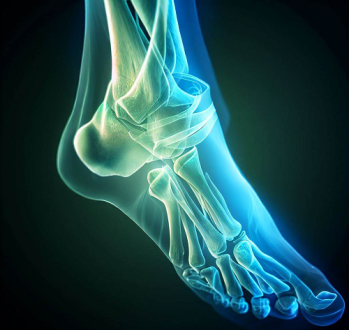What is Bifurcate Ligament?
This Bifurcate ligament assists in stabilizing the midfoot and is located on the outside of the foot. It is linked to the calcaneus (heel bone) by two Y-shaped arms, one of which connects to the navicular bone and the other to the cuboid bone.
The ligament comprises a primary proximal stem that connects to the calcaneal sulcus and divides distally to connect to the navicular and dorsomedial side of the cuboid. It is anatomically located on the dorsal aspect of the calcaneocuboid joint. As a consequence of this, the BL is composed of two different bands, which are referred to as the CNL (calcaneonavicular ligament) and the calcaneocuboid ligament (CCL).
Bifurcate Ligament Sprain
Sprains of the lateral ankle contribute to 85 percent of the total ankle sprains and are the most prevalent cause of Bifurcate Ligament injuries due to the high impact and strain they place on the ligament.
When wearing heels, the foot is frequently in plantarflexion, which raises the risk of an ankle sprain and a bifurcate ligament strain.
An MRI offers greater precision regarding a Bifurcate Ligament Sprain, whereas a CT scan is able to provide additional information regarding an Avulsion fracture. If there is bone involved in the avulsion fracture, however, it is recommended to avoid weight-bearing for four to six weeks.
Bifurcate Ligament Fracture
The bifurcate ligament (BL), also known as the Chopart ligament, is a strong Y-shaped piece of tissue that helps stabilize the calcaneocuboid joint in the foot. The fact that the BL also serves to support the midtarsal and talocalcaneonavicular joints has led to frequent references to it as the “keystone” of the transverse tarsal joint.
Bifurcate ligament fractures are typically the result of a severe ankle joint injury or trauma. The most frequent causes are:
- Twisting or Inversion Injury: A bifurcate ligament injury can be caused by a sudden twisting or rolling of the ankle.
- High-Impact Trauma: Ligament fractures can occur as a result of direct harm to the ankle, like during a car accident or when falling from a great height.
- Injuries in Sports: The nature of high-impact sports such as basketball, soccer, and skiing puts athletes at a greater risk of suffering bifurcate ligament fractures.
Bifurcate Ligament Calcaneus
The calcaneus is a bone that is situated posterior to the midfoot and below the talus. The shape of this bone is quite similar to a rectangular prism. The prism’s long axis travels parallel to the foot’s midline. A calcaneus fracture, often known as a heel bone fracture, is a potentially debilitating injury. A high-energy event like a car crash or ladder fall can crush the heel, causing this form of fracture. This condition causes the heel to enlarge, shorten, and become malformed. A calcaneus fracture is a potentially serious injury.
Surgery is frequently used to repair the heel’s typical structure and regain mobility, allowing patients to resume their regular activities. However, despite receiving the best care, some fractures can still cause chronic discomfort, swelling, limited mobility, and even arthritis years after the initial injury. After suffering a calcaneus fracture, it is sometimes impossible for patients to return to their previous employment, particularly those that require a lot of physical labor.
Bifurcate Ligament Avulsion
Most ligament tears occur at the point where the calcaneus attaches to the cuboid, which occurs when individuals roll their ankles from a plantarflexed position (on the toes). In some instances, the ligament is torn away from the bone, carrying a small bone fragment with it. This state is considered an avulsion fracture. The ligament can separate from either the calcaneus (heel) or the cuboid (midfoot).
 Health & Care Information
Health & Care Information



